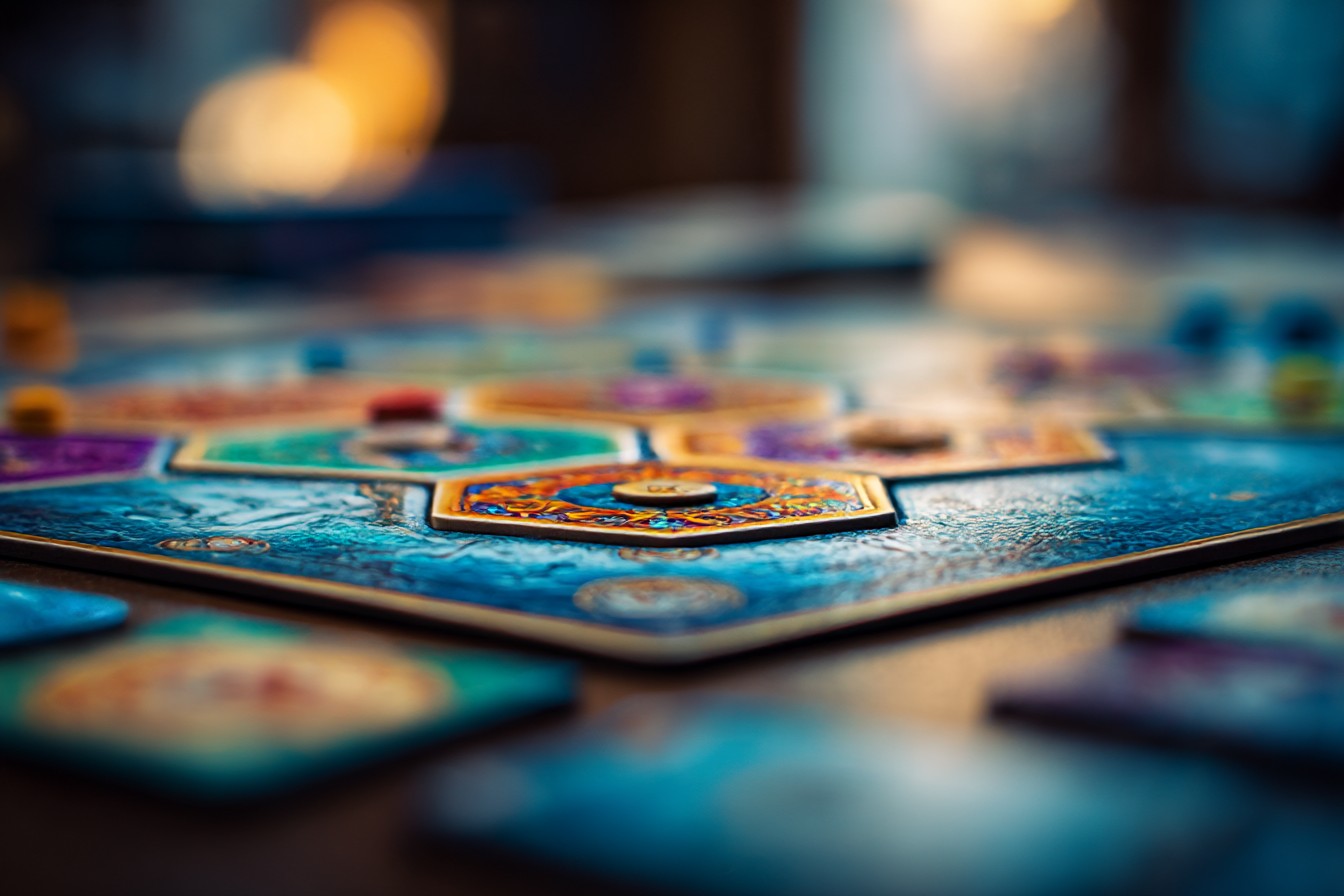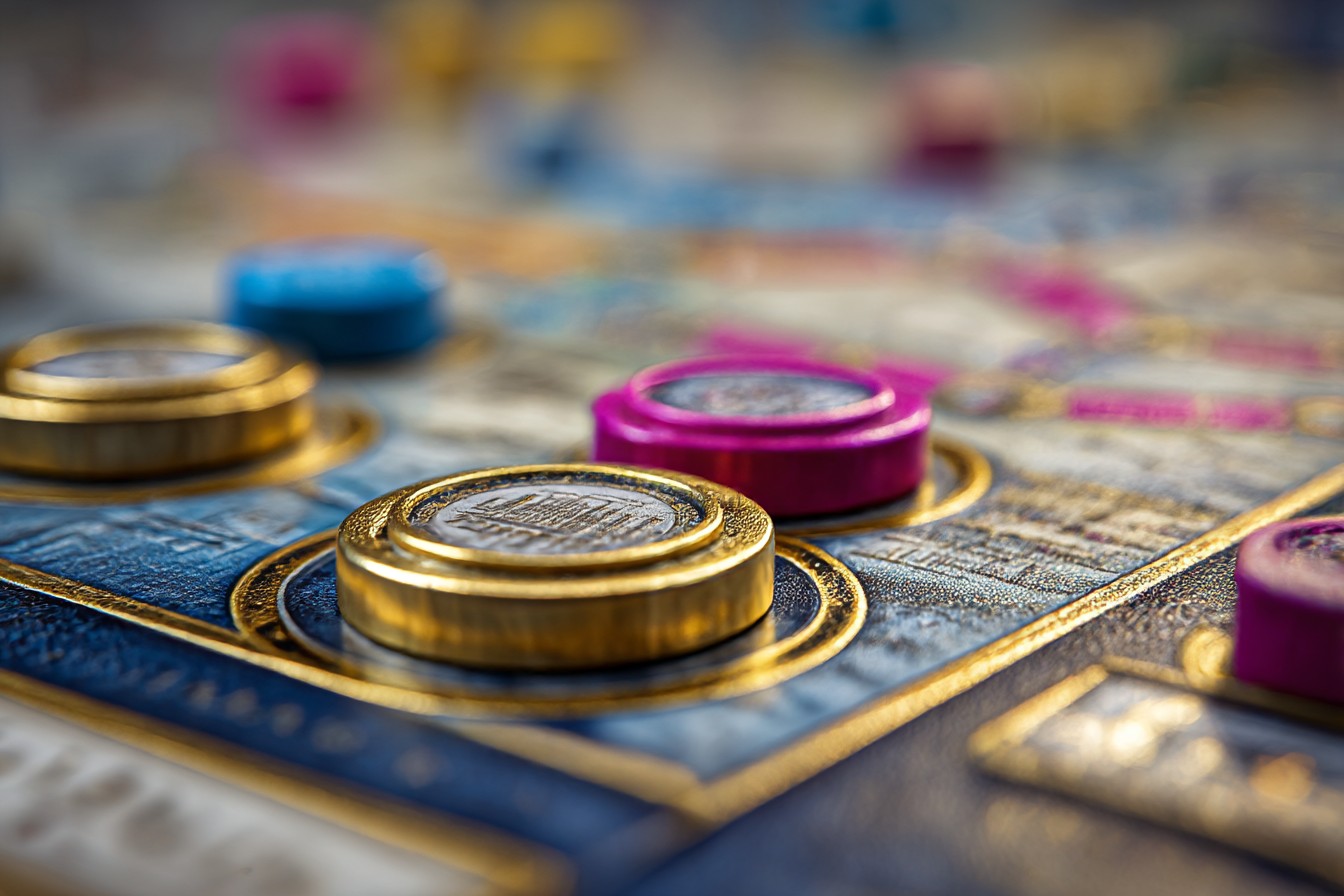You know what’s funny? I’ve been teaching kids about mathematical optimization for fifteen years, but it took a board game expansion to really humble me about thinking I understood complex systems. Last Tuesday I finally got Five Tribes: Whims of the Sultan back to the table after it had been sitting on my shelf for… well, longer than I care to admit. Karen keeps reminding me that just because I own a game doesn’t mean it needs to stay in rotation forever, but man, sometimes you forget why you loved something until you experience it again.
The thing is, my regular gaming group had been asking about this expansion for months. “Hey Albert, didn’t you say that Five Tribes expansion was really good?” Yeah, I did say that. About eight months ago. Before I got distracted by every new Kickstarter and store release that crossed my path. Anyway, we set it up last week and I was immediately reminded why this expansion sits in my top ten list of game additions that actually matter.
See, the base Five Tribes is already this mental workout that leaves your brain feeling like you just ran a marathon. You’re calculating mancala movements, weighing djinn powers, trying to predict opponent moves, managing multiple resource types… it’s a lot. Then you add Whims of the Sultan and suddenly you’re also dealing with auction timing, palace intrigue, and resource conversion chains that make my algebra students’ homework look simple by comparison.
I’ve logged maybe sixty plays of this expansion now – yes, I keep track, don’t judge me – and it still surprises me. That’s the mark of really exceptional game design, I think. Not just adding more stuff, but revealing strategic depth that was always lurking in the original framework. Like discovering your favorite song has harmonies you never noticed before.
The palace boards are gorgeous, I’ll give them that. When I first opened the box back in 2017, I actually thought they looked almost too fancy. All that detailed artwork seemed excessive for what’s essentially a bidding track. But after playing, I realized Bruno Cathala knew exactly what he was doing. When you’ve got four different palace boards with multiple rooms each, plus all the various benefits and requirements, you need that visual clarity to process information quickly during your turn.
Most players completely undervalue the auction aspect initially. I see it constantly – people treat palace bidding like an afterthought, something to do when they have leftover camels burning a hole in their pocket. That’s backwards thinking. The palace rooms should be driving your entire resource strategy, not following along behind it like an unwanted younger sibling.
Here’s what took me probably twenty games to figure out: stop thinking about palace boards as end-game scoring opportunities and start treating them as tempo accelerators. When you claim a palace room early, you’re not just banking points for later. You’re gaining immediate operational advantages that compound every single turn afterward. The extra djinn draws, the resource conversions, the movement bonuses… these effects reshape how efficiently you can execute everything else.
I learned this lesson during a particularly painful game against my colleagues Sarah and Mike. Sarah teaches fourth grade and has this annoying habit of being right about strategy games. I was hoarding resources like a dragon, waiting for the “perfect” bidding opportunity. Meanwhile, Sarah kept taking palace rooms for reasonable investments, using those advantages to dominate board control. By turn six I realized she’d built an unbeatable position through superior tempo while I was still optimizing my resource allocation like some kind of efficiency robot.
The bidding mechanism is sneaky complicated. It’s not a straightforward auction where highest bid wins everything. The palace system rewards timing and resource flexibility in ways that aren’t immediately obvious. You need camels to bid, but you also need those same camels for movement and djinn purchases. Classic economic tension – committing resources to one system weakens your position in another system.
My current rule of thumb: never bid more than you can afford to completely lose. Sounds simple, right? But auction fever is real, and I’ve watched intelligent adults blow through their entire camel supply chasing a single palace room, then spend the rest of the game unable to execute basic mancala movements. The expansion punishes tunnel vision with zero mercy.
Resource management becomes significantly more demanding with palaces in play. Base Five Tribes already requires careful balancing of colored meeples, gold, and djinn cards. Add palace resources and you’re simultaneously tracking maybe eight different currencies. My math teacher brain occasionally just locks up trying to optimize everything simultaneously. Karen finds this hilarious – the guy who can calculate compound interest in his head gets overwhelmed by wooden tokens.
The breakthrough came when I stopped attempting global optimization and started thinking in terms of opportunity sequences. Instead of calculating the theoretical best use for every resource, I focus on identifying action chains that flow naturally together. Palace room enables resource advantage enables better djinn purchase enables improved board control. Following these sequences feels more intuitive than pure mathematical calculation, and honestly works better in practice.
Timing your palace bids requires reading opponents as much as reading game state. Some players always bid aggressively early, others wait until final rounds. Neither approach is inherently superior, but adapting to opponent patterns creates real advantages. I’ve won several games by simply adjusting my bidding timing to avoid direct confrontation with predictable players.
The expansion changes djinn evaluation significantly. Several new djinn interact specifically with palace mechanics, creating combination opportunities that don’t exist in base game. But more importantly, palace boards provide alternative paths to many benefits you’d normally seek from djinn cards. This redundancy increases strategic flexibility rather than reducing it, which seems counterintuitive but works beautifully.
I remember one game where I completely ignored djinn acquisition for the first half, focusing entirely on palace rooms that provided similar benefits. My opponents loaded up on djinn while I quietly built palace advantages. Final scoring revealed my palace strategy had generated comparable points through a completely different strategic path. Different routes to the same destination.
The expansion rewards players who can maintain awareness of multiple parallel systems without becoming paralyzed by analysis. Yes, there are more options available each turn. But there are also more ways to recover from suboptimal decisions. Palace boards provide alternative scoring paths that can compensate for poor board control or unsuccessful djinn strategies.
One aspect I initially missed was how the expansion affects player interaction. Bidding creates new opportunities for cooperation and manipulation. Sometimes you bid not because you want a particular palace room, but because you want to force an opponent to overpay for it. Sometimes you let an opponent win a bid cheaply because you’ve identified a better opportunity they haven’t noticed yet. It’s psychological warfare disguised as resource management.
My current approach prioritizes flexibility over specialization. Rather than committing early to specific palace strategies, I try to position myself to exploit whatever opportunities develop. This means maintaining diverse resource pools and avoiding early bids that would lock me into narrow strategic paths. Stay loose, stay ready.
The expansion definitely increases game length, but not as dramatically as you might expect. Yes, there are more decisions each turn, but palace benefits often accelerate your ability to execute those decisions efficiently. A well-timed palace acquisition can actually speed up subsequent turns significantly by providing better action efficiency.
After all these plays, I still occasionally make bidding errors or misread palace opportunities. That’s part of what keeps this expansion engaging for me. There’s always another optimization layer to discover, another interaction between palace benefits and board control that I hadn’t considered before. It’s the kind of expansion that grows with your understanding rather than wearing out through repetition. Karen says I need to accept that not every game needs this level of analysis, but honestly? When a design is this rich, why wouldn’t you want to explore every corner of it?
Albert’s a Minneapolis math teacher who treats rulebooks like sacred texts. He writes clear, structured guides for players who want to get it right the first time—no arguments, no confusion, just smooth game nights. If there’s a rules debate, he’s already looked it up.



